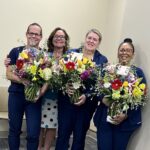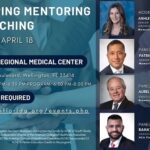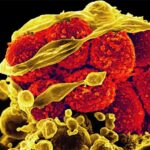When an art lover examines a painting, sculpture, or some other intriguing artistic creation, a considerable amount of time is usually spent scrutinizing all facets of the object in great detail. The same can be said about the practice of quality medicine, which also involves a considerable amount of observational skill by a physician.
Consequently, it’s not surprising to discover that an increasing number of medical schools are incorporating art and medicine programs into their curriculums. In 2008, Harvard Medical School published a study involving medical students enrolled in an art observation course. Interestingly, the study results indicated about a 38 percent increase in student observation skills. In the ensuing four years, approximately 20 medical schools across the country have developed various courses or workshops incorporating art observation, including Nova Southeastern University’s forward-thinking College of Osteopathic Medicine (NSU-COM).
NSU-COM’s Art Observation Pilot Program has already met with significantly favorable response even though it’s still a work in progress. Much of its success can be attributed to Dianna L. Silvagni, J.D., clinical assistant professor of medical education and a major art enthusiast, who spearheads the program. In 2011, after receiving an email from a colleague about the art and medicine curricular concept, Silvagni decided to research the topic further and meet with several of the college’s top administrators to discuss the idea, which was met with enthusiasm.
“Because of the interdisciplinary structure of the Health Professions Division (HPD), we decided that implementing an interdisciplinary approach to the program would be beneficial because there was general agreement that student observation skills have declined throughout the various health professions,” she explained. “We also felt we had an advantage because NSU owns the Museum of Art Fort Lauderdale, which meant we would have intra-institutional access to the local museum.”
Following months of strategic planning sessions with representatives from the various HPD discipline areas and beyond, the inaugural test program was initiated at the Museum of Art (MOA) in mid-2011 featuring members of the Art Observation Pilot Program Committee and several interested NSU-COM faculty members. In the subsequent months, an additional series of pilot programs involving volunteer first- and second-year osteopathic medical students, as well as representatives from the university’s Lifelong Learning Institute and Center for Psychological Studies, were coordinated. Additionally, in January 2012, the initial group of NSU College of Health Care Sciences faculty members participated in the program, with the next step involving the participation of that college’s students.
According to Silvagni, course registration has been larger than expected, and student engagement and satisfaction levels have been quite high. “I have visions of implementing this type of online program for various off-campus situations where students might not have access to a museum,” she explained. “My larger vision for this program is that it be utilized in several venues. I believe it is important for all people to increase their ability to observe others. The ultimate goal is to have interdisciplinary classes with students and faculty members from various disciplines interacting, teaching, and learning together how to increase their observation skills. It will also help promote team building, respect for other professions—and perhaps instill an appreciation of art along the way. Our intention is to implement the curriculum for first- or second-year NSU-COM and College of Health Care Sciences’ students in the fall of 2012.”
Once the various pilot programs conclude, a focus group encompassing representatives and students from each discipline will be scheduled to discern the most effective way to implement an interdisciplinary approach to the art observation curriculum.

























